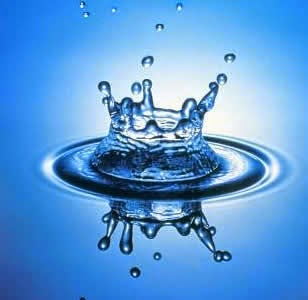In the UK, one penny coins are only legal tender for amounts up to 20p. (Source: Royal Mint)
Wednesday, 30 September 2015
Wednesday, 13 May 2015
Tuesday, 21 April 2015
Science Myth: Glass is a Slow-Moving Liquid
You may have lived for field trips as a kid, looking forward to a whole day of out-of-school fun and exploring. That is, until you got started on a tour of some musty building that seemed, well, boring. Not even the tour guide's explanation of how the glass in the wavy, uneven windowpanes has slowly flowed downward over time could keep your attention.
Liquid windowpanes? No.
Rather than the (magical-sounding) slow drip of centuries, the reason old glass windows aren't perfectly even and clear is because of how they were made. Until the early-mid 1800s, most window glass was made using a process called the crown method. The glass was blown, flattened, heated and spun, yielding a sheet that was relatively cheap to produce. It was also rippled and thicker in some places than in others.
In other words, the windows looked that way when they were installed, and they look that way now. No downhill liquid flow is involved. (And if you're really wondering: Glass is an amorphous solid.
Monday, 13 April 2015
Science Myth: The Great Wall of China is Visible from Space
This is a myth that originates before we had spaceflight, so no-one knew enough to get it debunked before it became so pervasive. In fact, you can see other man-made objects from space (especially when the part of the Earth being viewed is awash in the artificially illuminated glow of nighttime). It's also pretty hard to pick out the Great Wall of China from any space-based locale. In low-Earth orbit, it's next to impossible to see it with the naked eye. Even with a fairly hefty camera lens, it's still challenging to tell if you're looking at the Great Wall or not.
Wednesday, 8 April 2015
Science Myth: Body Heat Dissipates Mainly Through the Head
You lose most of your body heat through your head because there are so many blood vessels in your scalp. Or because there's not a lot of fat between your scalp and your skull. Or because there's a lot of circulation keeping your brain warm. Or something. At least, that's what we've all heard. That's why you need to wear a hat in the winter: Otherwise you'll catch cold.
But, the sad truth is, you lose just as much heat per square inch through your head as you do through the rest of the body, a fact that would become abundantly clear if you ever tried to scrape the frost off your windshield while naked. (I don't recommend trying that experiment.)
So if you're out on a wintry day and you notice that your head seems to be particularly cold compared to the rest of your body, it's probably because your head is bare, and everything else is sensibly bundled up. Putting on a hat will fix that problem.
It's less likely to keep you from catching a cold, though.
Tuesday, 7 April 2015
Science Myth: Salt is Bad for Us.
The salt myth is still alive and kicking, even though there has never been any good scientific support for it.
Although lowering salt can reduce blood pressure by 1-5 mm/Hg on average, it doesn’t have any effect on heart attacks, strokes or death.
Of course, if you have a medical condition like salt-sensitive hypertension then you may be an exception.
But the public health advice that everyone should lower their salt intake (and have to eat boring, tasteless food) is not based on evidence.
Tuesday, 31 March 2015
Science Myth: Brain Cell's Can't Regenerate
Thankfully, they can and do. The reason for this myth being so common is that it was believed and taught by the science community for a very long time. But in 1998, scientists at the Sweden and the Salk Institute in La Jolla, California discovered that brain cells in mature humans can regenerate. It had previously been long believed that complex brains would be severely disrupted by new cell growth, but the study found that the memory and learning center of the brain can create new cells – giving hope for an eventual cure for illnesses like Alzheimer’s.
Monday, 30 March 2015
Science Myth: Urinating on a Jellyfish Sting Helps Cure it.
Unfortunately not. Not sure where this one came from (other than being popularised by Friends in the 1990's) but doing this can actually do more harm than good. In fact the best thing you can do (before seeking medical advice, of course) is to wash the affected area with salt water.
Thursday, 26 March 2015
Science Myth: The Tongue Has Zones For Different Tastes.
Unfortunately not. All those experiments we did in Junior school? All lies and confirmation bias. The notion that the tongue is mapped into four areas—sweet, sour, salty and bitter—is wrong. There are five basic tastes identified so far, and the entire tongue can sense all of these tastes more or less equally.
Wednesday, 25 March 2015
Tuesday, 24 March 2015
Subscribe to:
Posts (Atom)









